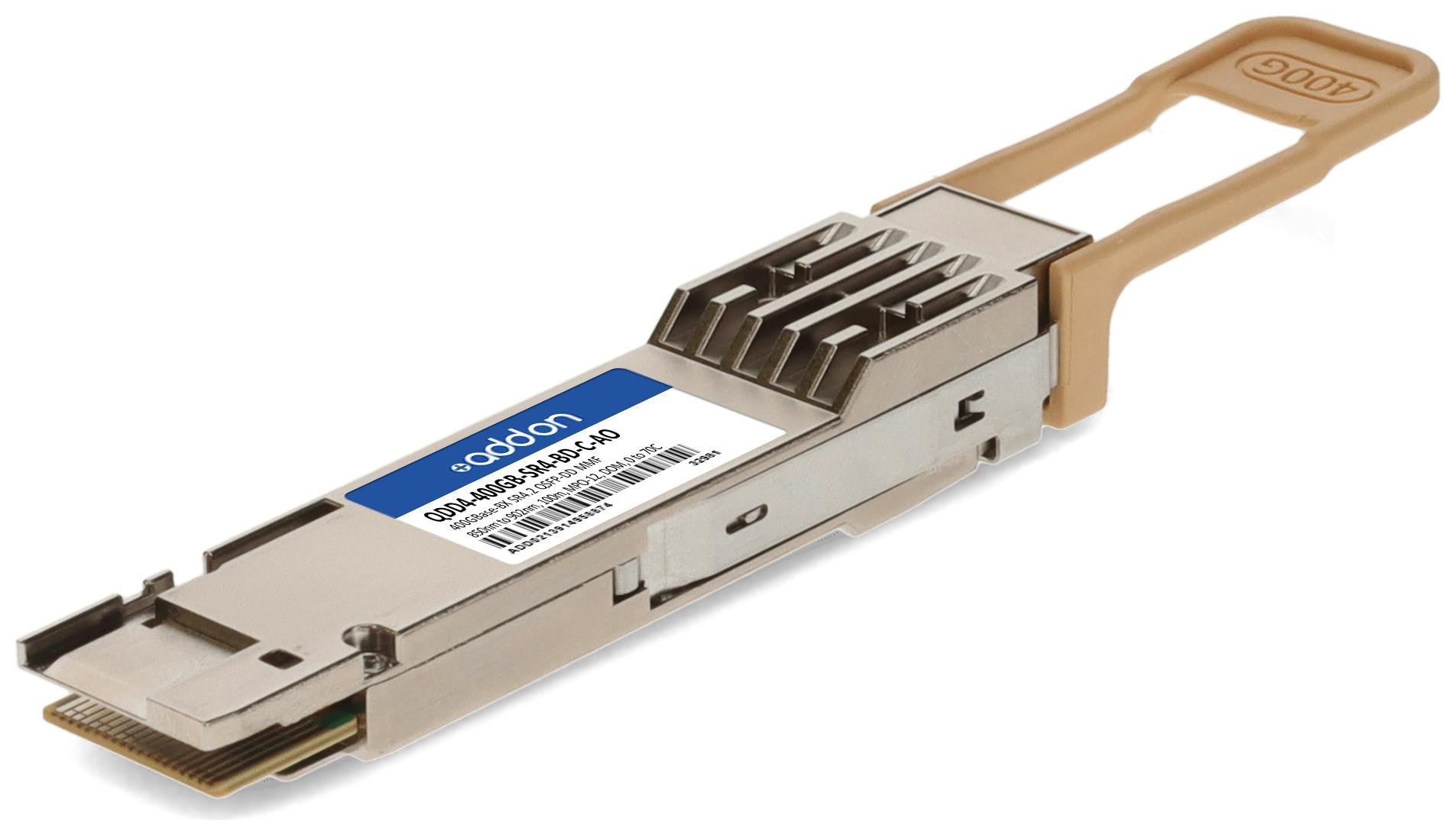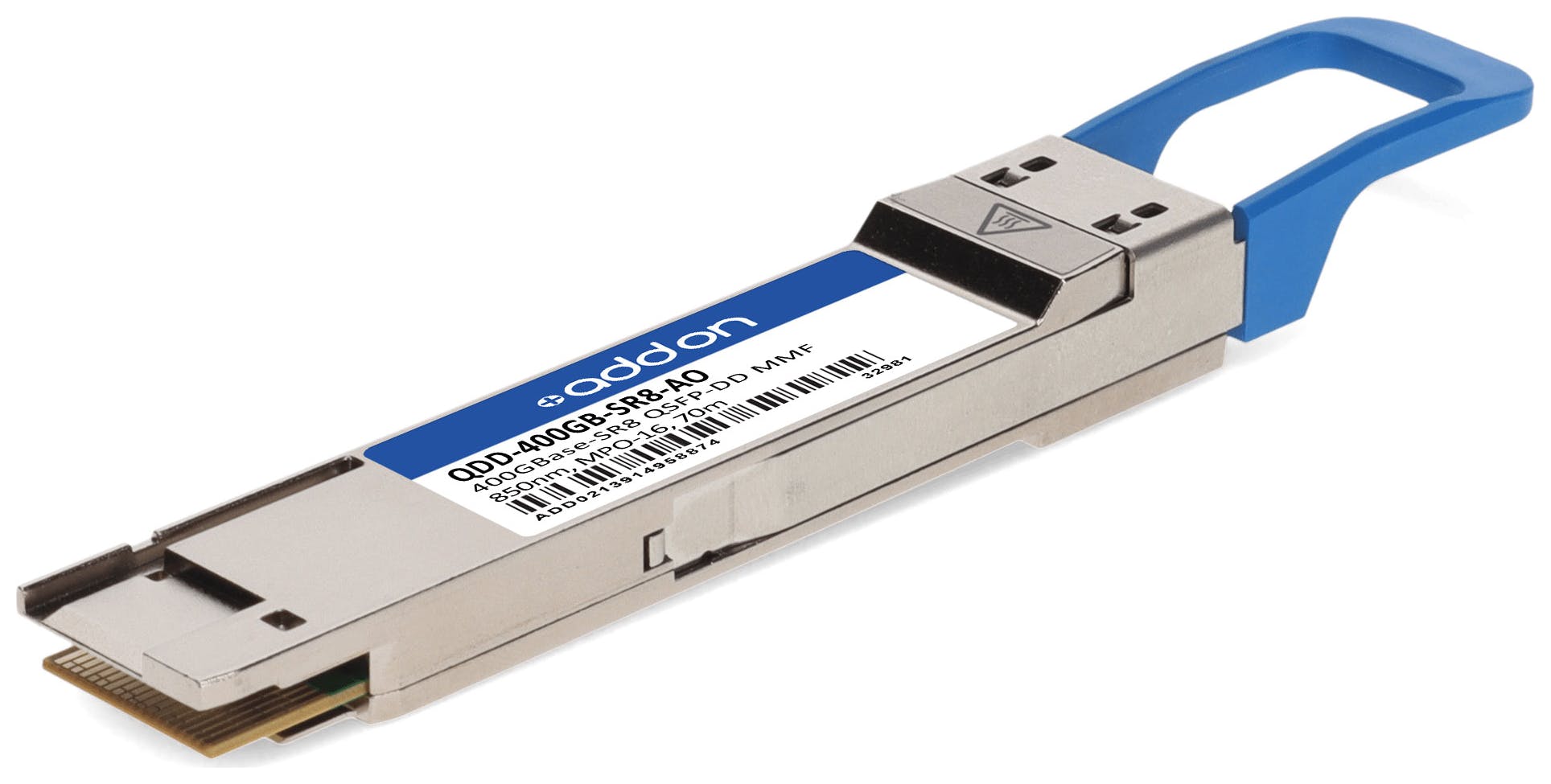Demand for data rates greater than 100 Gb/s is being driven by cloud and AI applications, resulting in the transition to high-speed, low-power 400 Gb/s interconnects. To support the short-reach application space inside data centers, the optical fiber industry developed two IEEE 400G Ethernet standards, 400G SR4.2 and 400G SR8.
400G SR4.2
400G SR4.2 is a 4-pair, 2-wavelength multi-mode solution supporting reaches of 70m (OM3), 100m (OM4), 150m (OM5). It is the first IEEE 802.3 solution to use multiple pairs of fibers and multiple wavelengths, as well as the first Ethernet standard to use two short wavelengths to double multi-mode fiber capacity from 50 Gb/s to 100 Gb/s per fiber.
The 400G SR4.2 operates on the same cabling as 40G SR4, 100G SR4, and 200G SR4. On each fiber, bidirectional transmission is used, with each wavelength traveling in opposite directions. As a result, each active position at the transceiver serves as both a transmitter and a receiver, resulting in a bidirectional optical configuration of eight optical transmitters and eight optical receivers in 400G SR4.2.

400G SR8
400G SR8 is an 8-pair, 1-wavelength multi-mode solution with 70m (OM3) and 100m (OM4) reach (OM4 & OM5). It is the first IEEE fiber interface to employ 8 fiber pairs. Unlike the 400G SR4.2, it operates on a single wavelength (850nm), with each pair capable of transmitting 50 Gb/s. It also has two optical lane arrangement variants: a 24 fiber MPO configured as two rows of 12 fibers & a single-row MPO-16.
Additionally, 400G SR8 provides both flexibility and higher density that supports fiber shuffling in 50G/100G/200G configurations, as well as fanout at various I/O speeds for a variety of applications. A 400G SR8 QSFP-DD transceiver can be configured to operate as 400G SR8, 2x200G SR4, 4x100G SR2, or 8x50G SR.


400G SR4.2 vs. 400G SR8
While 400G SR4.2 and 400G SR8 are both multi-mode solutions for 400G Ethernet, they have several features in common as well as significant differences, which are covered in the table below.
 |  | |
400G SR4.2 | 400G SR8 | |
Alliance | IEEE 802.3cm | IEEE 802.3cm (Breakout: 802.3cd) |
Max Reach | 150m over OM5 | 100m over OM4/OM5 |
Fibers | 8 fibers | 16 fibers |
Wavelength | 2 wavelengths (850nm & 910nm) | 1 wavelength (850nm) |
Bidi technology | Support | / |
Signal modulation format | PAM4 signaling | PAM4 signaling |
Form Factor | QSFP-DD, OSFP | QSFP-DD, OSFP |
Upgrade Form | 40G SR4 100G SR4 | / |
Although 400G SR8 is technically simple, a ribbon patch cord with 16 fibers is required. It is typically built with 8 VCSEL lasers and does not include a gearbox, which keeps the overall cost of modules and fibers low. In comparison, 400G SR4.2 is technically more complex, resulting in a higher overall cost of related fibers or modules, but it can support a longer reach.
Increasing Higher Speed Ethernet with 400G SR4.2 and 400G SR8
Both 400G SR4.2 and 400G SR8 support 400G Ethernet and scale up multi-mode fiber lines, assuring the feasibility of optical solutions for a variety of demanding applications as multi-mode fiber develops to meet rising speed and capacity demands.
With the two IEEE 802.3cm standards, it provides a smooth path for Ethernet evolution to enhance cloud-based services and applications. These future advancements indicate that they will be able to support even higher data rates as they progress to the next level. Thus, eventually having 400G SR4.2 and 400G SR8 pave the way for future of 800 Gb/s Ethernet.
